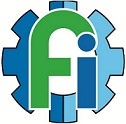Tsunami Modeling In The Mentawai Island As A Study Material For Disaster Mitigation (Case Study: Mentawai Earthquake, October 25, 2010)
Abstract
Keywords
Full Text:
PDFReferences
K. Bima Pramudya, et al, “Analisa Perubahan Kecepatan Pergeseran Titik Akibat Gempa Menggunakan Data SuGar (Sumatran GPS Array),” J. Tek. ITS, vol. 5, no. 2, pp. 2301–9271, 2016.
F. Rahma, et al., “Korelasi Tingkat Seismisitas dan Periode Ulang Gempa Bumi di Kepulauan Mentawai dengan Menggunakan Metode Guttenberg-Richter Korelasi Tingkat Seismisitas dan Periode Ulang Gempa Bumi di Kepulauan Mentawai dengan Menggunakan Metode Guttenberg-Richter,” J. Fis. Unand, vol. 7, no. Januari, p. 1, 2018, doi: 10.25077/jfu.7.1.84-89.2018.
K. Anton Setyo, “Structural Analysis of The Sumatran Fault Zone Around The Semangka Bay, Lampung South Sumatera,” in Proceedings Indonesian Association of Geologists (IAGI) 13th Annual Convention, 1991.
I. Titin, “Mekanisme Fokus Gempa Bumi Mentawai,” Universitas Islam Negeri Syarif Hidayatullah Jakarta, 2011.
D. Fitra Harris, et. al., “Integrated Seismic Attributes Analysis of Naturally Fractured Basement Reservoir : An Approach to Define Sweet Spot for Optimum Well Location and Trajectory,” in Proceedings, Indonesian Petroleum Association, 2017, no. May. doi: 10.29118/IPA.50.17.214.G.
S. Leni, et al., “Analisis Perubahan Ionosfer Akibat Gempa Mentawai Tahun 2010 (Studi Kasus: Kepulauan Mentawai),” J. Tek. ITS, vol. 5, no. 2, pp. 11–16, 2016.
BNPB, Rencana Aksi Rehabilitasi dan Rekonstruksi Pascabencana, serta Percepatan Pembangunan Wilayah Kepulauan Mentawai Provinsi Sumatera Barat Tahun 2011-2013. Sumatera Barat: Badan Nasional Penanggulangan Bencana, 2010.
A. Sabar, “Energi Potensial Gempabumi Di Kawasan Segmen Mentawai - Sumatera Baratt (0.5˚ LS – 4.0˚ LS dan 100˚ BT – 104˚ BT),” PSJ, vol. 2, no. 1, 2014.
USGS, “M7.8 – Kepulauan Mentawai region, Indonesia (BETA),” USGS, 2024. https://earthquake.usgs.gov/earthquakes/eventpage/usp000hnj4/focal-mechanism
S. Wiko, et. al., “Validasi Pemodelan Tsunami Berdasarkan Software L-2008 Menggunakan Data Sumber Gempabumi USGS, IRIS, CMT, dan GFZ Untuk Studi Kasus Tsunami Nias 28 Maret 2005,” J. Meteorol. dan Geofis., vol. 16, no. 1, pp. 25–36, 2015.
W. Donald L., et. al., “New Empirical Relationships among Magnitude , Rupture Length , Rupture Width , Rupture Area , and Surface Displacement,” Bull. Seismol. Soc. Am., vol. 84, no. 4, pp. 974–1002, 1994.
H. Thomas C., et. al., “A Moment Magnitude Scale,” J. Geophys. Res., vol. 84, no. B5, 1979.
DOI: http://dx.doi.org/10.12962%2Fj24604682.v21i3.22662
Refbacks
- There are currently no refbacks.

This work is licensed under a Creative Commons Attribution-ShareAlike 4.0 International License.







